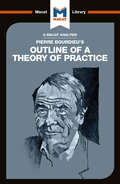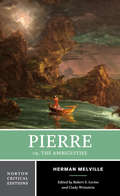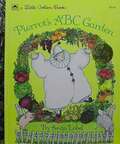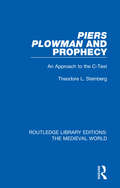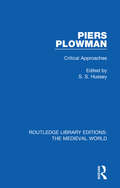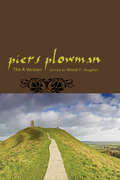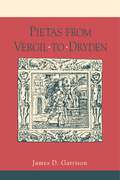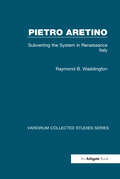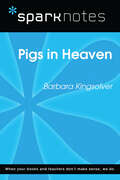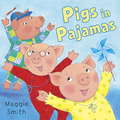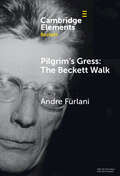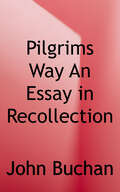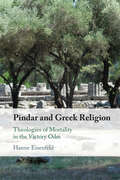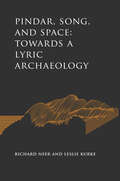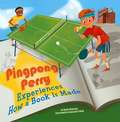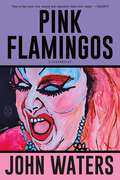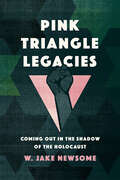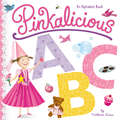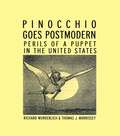- Table View
- List View
Pierre Bourdieu's Outline of a Theory of Practice (The Macat Library)
by Rodolfo MaggioIn Outline of a Theory of Practice, Bourdieu questions the preeminent ideas of social anthropologists such as Levi-Strauss who stressed the structural principles governing human action rather than the actions themselves and, Bourdieu asserts, doesn’t account for all observable nuances of behaviour. Drawing on his fieldwork in Algeria, he expresses the need for a theory of practice focusing on the dynamic flow of human actions in the social world. Bourdieu coins the term ‘habitus’- a relational concept linking structures to the practice of agents. Outline is a significant and original contribution, providing an account of many of the issues Bourdieu continued to develop through his career.
Pierre: Or, The Ambiguities (Norton Critical Editions)
by Herman Melville Robert S. Levine Cindy WeinsteinWhen Pierre was published one year after Moby-Dick, expectations were high. Readers expected—and Melville delivered—adventure, humor, and brilliance. Magnificent and strange, Pierre is a richly allusive novel mirroring both antebellum America and Melville’s own life. This Norton Critical Edition includes: · The Harper & Brothers 1852 first edition of the novel, accompanied by Robert S. Levine and Cindy Weinstein’s editorial matter. · Six illustrations. · Contextual and source materials, including letters, responses to Pierre by Melville’s contemporaries, and works by Daniel Webster, Thomas Cole, James Fenimore Cooper, Lydia Maria Child, and Nathaniel Hawthorne, among others, that give readers a sense of Pierre’s time and place. · Seven critical essays on Pierre’s major themes by Sacvan Bercovitch, James Creech, Samuel Otter, Wyn Kelley, Cindy Weinstein, Jeffory A. Clymer, and Dominic Mastroianni. · A Chronology and a Selected Bibliography.
Pierrot's ABC Garden
by Anita LobelPierrot collects things from his garden that begin with each letter of the alphabet.
Piers Plowman and Prophecy: An Approach to the C-Text (Routledge Library Editions: The Medieval World #49)
by Theodore L. SteinbergOriginally published in 1991, Piers Plowman: An Approach to the C-Text studies what might be called the "mindscape" of Piers Plowman. The book argues that the C-text poem is inspired by the writings of the biblical prophets. The book outlines the fourteenth-century background and discusses the idea of prophecy and how the biblical prophets were read, as well as the role of literary models such as Wyclif and Joachim of Fiore. By examining the specific aspects of the poem, the book shows imaginative connections between the poem and the prophets, offering a unique perspective that Langland’s prophetic stance is complementary to other approaches to the poem.
Piers Plowman and the Reinvention of Church Law in the Late Middle Ages
by Arvind ThomasIt is a medieval truism that the poet meddles with words, the lawyer with the world. But are the poet’s words and the lawyer’s world really so far apart? To what extent does the art of making poems share in the craft of making laws, and vice versa? Framed by such questions, Piers Plowman and the Reinvention of Church Law in the Late Middle Ages examines the mutually productive interaction between literary and legal "makyngs" in England’s great Middle English poem by William Langland. Focusing on Piers Plowman’s preoccupation with wrongdoing in the B and C versions, Arvind Thomas examines the versions’ representations of trials, confessions, restitutions, penalties, and pardons. Thomas explores how the "literary" informs and transforms the "legal" until they finally cannot be separated. Thomas shows how the poem’s narrative voice, metaphor, syntax and style not only reflect but also act upon properties of canon law, such as penitential procedures and authoritative maxims. Langland’s mobilization of juridical concepts, Thomas insists, not only engenders a poetics informed by canonist thought but also expresses an alternative vision of canon law from that proposed by medieval jurists and today’s medievalists.
Piers Plowman: Critical Approaches (Routledge Library Editions: The Medieval World #23)
by S. S. HusseyOriginally published in 1969 Piers Plowman is a collection of 12 original essays by leading academics on Piers Plowman. As a combined volume, this collection forms a substantial introduction and a comprehensive account of the poem, its background and textual problems. The book’s essays reflect the diversity, and vigour of criticism in the field of medieval literature and opens new perspectives in the study of one of its finest poems.
Piers Plowman: The A Version
by Miceal F. VaughanThe fourteenth-century Piers Plowman is one of the most influential poems from the Age of Chaucer. Following the character Will on his quest for the true Christian life, the three dream narratives that make up this work address a number of pressing political, social, moral, and educational issues of the late Middle Ages. Míċeál F. Vaughan presents a fresh edition of the A version, an earlier and shorter version of this great work.Unlike the B and C versions, there is no modern, affordable edition of the A version available. For the first time in decades, students and scholars of medieval literature now have access to this important work. Vaughan’s clean, uncluttered text is accompanied by ample glossing of difficult Middle English words. An expansive introduction, which includes a narrative summary of the poem, textual notes, detailed endnotes, and a select bibliography frame the text, making this edition ideal for classroom use.This is the first classroom edition of the A version since Thomas A. Knott and David C. Fowler’s celebrated 1952 publication. Based on an early-fifteenth-century manuscript from the University of Oxford’s Bodleian Library, Vaughan’s text offers a unique rendition of the poem, and it is the first modern edition not to attribute the poem to William Langland. By conservatively editing one important witness of Piers Plowman, Vaughan takes a new generation of students to an early version of this great medieval poem.
Pietas from Vergil to Dryden
by James GarrisonFor centuries the most revered poem in the Western literary canon, Vergil's Aeneid celebrates the Roman virtue of pietas. In the preface to his English translation of the poem, John Dryden attempts to explain all that this virtue includes: "Piety alone," he writes, "comprehends the whole Duty of Man towards the Gods, towards his Country, and towards his Relations." Dryden's definition belongs to a dialogue about meaning that reflects a history of contention over religious, political, and moral issues of enduring cultural significance. Because it is the site of antagonism between pagan and Christian, republican and imperialist, emperor and pope, Protestant and Catholic, pietas and its derivatives in the modern languages bring to literary works multiple contexts of ideological dispute. This book traces the history of the Vergilian ideal from classical Latin to neoclassical English literature. In the process of, it comparatively engages interpretation of a range of literary works diversely responsive to the Aeneid: from the histories and historical epics of the Silver Age, to the medieval mirrors for magistrates, to Renaissance adaptations of Aeneid 4 and 12, and finally to Dryden's complete translation.
Pietas from Vergil to Dryden (G - Reference, Information and Interdisciplinary Subjects)
by James GarrisonFor centuries the most revered poem in the Western literary canon, Vergil's Aeneid celebrates the Roman virtue of pietas. In the preface to his English translation of the poem, John Dryden attempts to explain all that this virtue includes: "Piety alone," he writes, "comprehends the whole Duty of Man towards the Gods, towards his Country, and towards his Relations." Dryden's definition belongs to a dialogue about meaning that reflects a history of contention over religious, political, and moral issues of enduring cultural significance. Because it is the site of antagonism between pagan and Christian, republican and imperialist, emperor and pope, Protestant and Catholic, pietas and its derivatives in the modern languages bring to literary works multiple contexts of ideological dispute. This book traces the history of the Vergilian ideal from classical Latin to neoclassical English literature. In the process of, it comparatively engages interpretation of a range of literary works diversely responsive to the Aeneid: from the histories and historical epics of the Silver Age, to the medieval mirrors for magistrates, to Renaissance adaptations of Aeneid 4 and 12, and finally to Dryden's complete translation.
Pietro Aretino: Subverting the System in Renaissance Italy (Variorum Collected Studies)
by Raymond B. WaddingtonThe essays gathered together in this volume follow the career of the sixteenth-century courtier-poet Pietro Aretino. Part One introduces the author during the 1520s in Rome with his remarkable first comedy, La Cortigiana. With Aretino’s move to Venice (1527), he found a congenial life-long home in which he could flourish. Yet the transition from courtier poet to poligrafo, vernacular writer for the popular press, was slow and difficult before he adopted a new career model derived from Erasmus; even then, he contemplated abandoning Italy for the Ottoman Empire. Part Two examines his work as a satirist in the mid-thirties with the Ragionamenti, the dialogues that branded him a pornographer when the satiric targets lost their immediacy. He augmented the satiric writings by creating the visual persona of a satirist in various media - woodcut author portraits in books, engravings, and particularly portrait medals. The complementary, verbal-visual relationship is the subject of this pairing. Aretino’s religious writings have not been taken seriously until quite recently. The two essays presented here trace Aretino’s associations with Erasmians, spirituali, heretics, and apostates, arguing that his own convictions were sincere, suggesting that he became a Nicodemite during the gathering Counter-Reformation repression of the 1540s. The concluding essays consider two examples of Aretino’s continuing influence in different media, visual arts and literature: on the brilliant, eccentric artist, Giuseppe Arcimboldo, and on a great English comedy, Ben Jonson’s Volpone.
Pigs in Heaven (SparkNotes Literature Guide Series)
by SparkNotesPigs in Heaven (SparkNotes Literature Guide) by Barbara Kingsolver Making the reading experience fun! Created by Harvard students for students everywhere, SparkNotes is a new breed of study guide: smarter, better, faster. Geared to what today's students need to know, SparkNotes provides: *Chapter-by-chapter analysis *Explanations of key themes, motifs, and symbols *A review quiz and essay topicsLively and accessible, these guides are perfect for late-night studying and writing papers
Pigs in Pajamas
by Maggie SmithAt Penelope Pig's sleepover party, six pigs in pj's eat pizza and pasta, pound a pinata, pin the tail on the pony, prance to piano, and then form a precarious pyramid--collapsing, of course, into a sqealing pig pile! Maggie Smith combines rollicking rhymes and infectious alliterations to make a perfectly pleasing book filled with fun and the letter P. And while there are scads of P words in the text, the art has even more--the pictures are filled with more than 75 objects beginning with the letter P for young readers to find. The playful pictures also introduce other preschool concepts, such as colors, shapes, patterns, and counting. Pigs in Pajamas offers a fun way to get preschoolers thinking about language and building their vocabularies. Party on, Penelope Pig!
Pilgrim's Gress: The Beckett Walk As Aesthetic Practice (Elements in Beckett Studies)
by Andre FurlaniWalking is a determining trope and structure in Samuel Beckett's oeuvre, furnishing a textual and performance figure, a framing device, and a material practice. The walk begins as a motif, becomes a rhythm, expands into a compositional principle, and culminates in an ontology -- a defining means by which his characters are cognitively embodied and by which meaning is grounded. The book contends that Beckett's literary pedestrianism involve passage from an evasive and narcissistic vestige of Romanticism and a solipsistic variation on Edwardian autonomy to an embrace of mutuality and transitory being: life not as a network of stations so much as a meshwork of ways, peripatetic coming and going as the basis of human possibility and ethical value. The study examines the Beckett walk with reference to, for instance, cognitive theory, materialities theory, environmental studies, infrastructure theory, cultural and literary history, speech-act theory, mobility studies and performance studies.
Pilgrim's Way: An Essay in Recollection
by John BuchanThis text is the personal account of the experiences of John Buchan, twentieth-century author and Governor-General of Canada
Pilot Impostor
by James HannahamA startling, shape-shifting book of prose and images that draws on an unexpected pair of inspirations—the poetry of Fernando Pessoa and the history of air disasters—to investigate con men, identity politics, failures of leadership, the privilege of ineptitude, the slave trade, and the nature of consciousness.Early in 2017, on a plane from Cape Verde to Lisbon, author and visual artist James Hannaham started reading Pessoa & Co., Richard Zenith's English translation of Fernando Pessoa's selected poetry. This was two months after Trump's presidential election; like many people, ideas about unfitness for service and failures of leadership were on his mind. Imagine his consternation upon discovering the first line of the first poem in the book: "I've never kept sheep/But it's as if I did."The Portuguese, Hannaham had been musing, were responsible for jump-starting colonialism and the slave trade. Pessoa published one book in Portuguese in his lifetime, Mensagem, which consisted of paeans to European explorers. He also invented about seventy-five alter egos, each with a unique name and style, long before aliases and avatars became a feature of modern culture.Hannaham felt compelled to engage with Pessoa's work. Once in Lisbon, he began a practice of reading a poem from Zenith's anthology and responding in whatever mode seemed to click. Even before his trip, however, he had become fascinated by Air Disasters, a TV show that tells the story of different plane crashes in each of its episodes. These stories—as well as the textures and squares of the city he was visiting—began to resonate with his concerns and Pessoa&’s, and make their way into the book.Through its inspirations and juxtapositions and its agile shifts of voice and form—from meme to fiction to aphorism to screenshot to lyric—the book leads us to reckon with the most universal questions. What is the self? What holds the self—multiple, fragmented, performative, increasingly algorithmically controlled, constantly under threat of death—intact and aloft?
Pindar and Greek Religion: Theologies of Mortality in the Victory Odes
by Hanne EisenfeldPindar's victory songs teem with divinity. By exploring them within the lived religious landscapes of the fifth century BCE, Hanne Eisenfeld demonstrates that they are in fact engaged in theological work. Focusing on a set of mythical figures whose identities blur the boundaries between mortality and immortality (Herakles, the Dioskouroi, Amphiaraos, and Asklepios), she newly interprets the value of immortality in the epinician corpus. Pindar's depiction of these figures responds to and shapes contemporary religious experience and revalues mortality as a prerequisite for the glory found in victory. The book combines close reading and philological analysis with religious historical approaches to Pindar's songs and his world. It highlights the inextricability of Greek literature and Greek religion, and models a novel approach to Greek lyric poetry at the intersection of these fields.
Pindar and the Emergence of Literature
by Boris MaslovPindar and the Emergence of Literature places Pindar in the context of the evolution of Archaic Greek poetics. While presenting an in-depth introduction to diverse aspects of Pindar's art (authorial metapoetics, imagery, genre hybridization, religion, social context, and dialect), it seeks to establish a middle ground between cultural contextualism and literary history, paying attention both to poetry's historical milieu and its uncanny capacity to endure in time. With that methodological objective, the book marshals a new version of historical poetics, drawing both on theorists usually associated with this approach, such as Alexander Veselovsky, Mikhail Bakhtin, and Olga Freidenberg, and on T. S. Eliot, Hans Blumenberg, Fredric Jameson, and Stephen Greenblatt. The ultimate literary-historical problem posed by Pindar's poetics, which this book sets out to solve, is the transformation of pre-literary structures rooted in folk communal art into elements that still inform our notion of literature.
Pindar's 'Olympian One': A Commentary
by Douglas E. GerberDrawing on an extensive knowledge of the critical history of Olympian One, Professor Gerber here presents a thorough analysis of the language thought, myth, structure, and poetic technique of Pindar's most famous ode. He deals with virtually every word in the poem, elucidating disputed passages, defining Pindar's use of imagery and myth and his structural techniques, and revealing the significance of his statements about the gods, the victor, and his own poetic practice. In doing so he makes a major contribution to Pindaric studies, aiding an understanding of this ode in particular, and of the poet's other works in general.
Pindar, Song, and Space: Towards a Lyric Archaeology (Cultural Histories of the Ancient World)
by Richard Neer Leslie KurkeA groundbreaking study of the interaction of poetry, performance, and the built environment in ancient Greece.Winner of the PROSE Award for Best Book in Classics by the Association of American PublishersIn this volume, Richard Neer and Leslie Kurke develop a new, integrated approach to classical Greece: a "lyric archaeology" that combines literary and art-historical analysis with archaeological and epigraphic materials. At the heart of the book is the great poet Pindar of Thebes, best known for his magnificent odes in honor of victors at the Olympic Games and other competitions. Unlike the quintessentially personal genre of modern lyric, these poems were destined for public performance by choruses of dancing men. Neer and Kurke go further to show that they were also site-specific: as the dancers moved through the space of a city or a sanctuary, their song would refer to local monuments and landmarks. Part of Pindar's brief, they argue, was to weave words and bodies into elaborate tapestries of myth and geography and, in so doing, to re-imagine the very fabric of the city-state. Pindar's poems, in short, were tools for making sense of space. Recent scholarship has tended to isolate poetry, art, and archaeology. But Neer and Kurke show that these distinctions are artificial. Poems, statues, bronzes, tombs, boundary stones, roadways, beacons, and buildings worked together as a "suite" of technologies for organizing landscapes, cityscapes, and territories. Studying these technologies in tandem reveals the procedures and criteria by which the Greeks understood relations of nearness and distance, "here" and "there"—and how these ways of inhabiting space were essentially political.Rooted in close readings of individual poems, buildings, and works of art, Pindar, Song, and Space ranges from Athens to Libya, Sicily to Rhodes, to provide a revelatory new understanding of the world the Greeks built—and a new model for studying the ancient world.
Pindar’s Poetics of Immortality
by Asya C. SigelmanModern scholarship tends to focus on the social, political and economic information that can be gleaned from Pindar's treatment of the subject of his victory odes - the athlete who brings immortality to his family and polis. In this book, Asya C. Sigelman offers a new approach to the odes, exploring the fact that Pindar's language and imagery suggest that the athlete's victory is only a weaker version of the poet's immortalizing feat. Examining several central Pindaric images, Sigelman shows that they are fundamentally reflexive, structured as expressions of poetic creativity engaged in a perpetual synthesis of intra-poetic time - of the unity of the past, present and future of the world of Pindar's song. As the book's case studies of several of the odes demonstrate, this synthesis is key to Pindar's notion of immortalization and constitutes the central poetic subject of Pindar's song which underlies and informs its praise of the victorious athlete.
Pingpong Perry Experiences How a Book Is Made
by Sandy DonovanPerry likes pizza and pingpong. But one day he wonders what kind of pizza professional pingpong players would pick. When he can't find the answers at the library, Perry decides to write his own book. Follow Perry's idea from beginning to end, and find out how his big idea becomes a book.
Pink Flamingos: A Screenplay
by John WatersThe return of a spectacular, reviled, and iconic classic of American filth! John Waters takes us back to the scene of his original crime against good taste. Watch as Babs Johnson fights to hold on to her title as “Filthiest Person Alive,“ fending off the craven attempts to dethrone her by her nemeses Connie and Raymond Marble.Read along as Waters takes us on a romp through his camp and filthy vision of Baltimore, from nefarious baby-stealing lesbians to scenes of unspeakable things done to unsuspecting chickens, to the film’s iconic and revolting coup de grace (no spoilers, but it is just as stomach-churning on the page more than fifty years later!). Pink Flamingos is John Waters at his provocative, disgusting, piety-puncturing best, with the hellish and hilarious trash masterpiece that first made him a household name.
Pink Triangle Legacies: Coming Out in the Shadow of the Holocaust
by W. Jake NewsomePink Triangle Legacies traces the transformation of the pink triangle from a Nazi concentration camp badge and emblem of discrimination into a widespread, recognizable symbol of queer activism, pride, and community. W. Jake Newsome provides an overview of the Nazis' targeted violence against LGBTQ+ people and details queer survivors' fraught and ongoing fight for the acknowledgement, compensation, and memorialization of LGBTQ+ victims. Within this context, a new generation of queer activists has used the pink triangle—a reminder of Germany's fascist past—as the visual marker of gay liberation, seeking to end queer people's status as second-class citizens by asserting their right to express their identity openly. The reclamation of the pink triangle occurred first in West Germany, but soon activists in the United States adopted this chapter from German history as their own. As gay activists on opposite sides of the Atlantic grafted pink triangle memories onto new contexts, they connected two national communities and helped form the basis of a shared gay history, indeed a new gay identity, that transcended national borders. Pink Triangle Legacies illustrates the dangerous consequences of historical silencing and how the incorporation of hidden histories into the mainstream understanding of the past can contribute to a more inclusive experience of belonging in the present. There can be no justice without acknowledging and remembering injustice. As Newsome demonstrates, if a marginalized community seeks a history that liberates them from the confines of silence, they must often write it themselves.
Pinkalicious ABC: An Alphabet Book (Pinkalicious)
by Victoria KannLearn your ABCs with Pinkalicious in this pinkamazing storybook!A is for Apple. B is for Bubble Bath. C is for Cupcake. What could be better than learning your ABC’s with Pinkalicious in this pinkamazing board book?Full of exciting illustrations and fun, playful words, the littlest readers will have a great time learning with Pinkalicious in one of her first board books ever!Readers can watch Pinkalicious and Peterrific on the funtastic PBS Kids TV series Pinkalicious & Peterrific!
Pinocchio Goes Postmodern: Perils of a Puppet in the United States (Children's Literature and Culture #Vol. 20)
by Richard Wunderlich Thomas J. MorrisseyIn the first full-length study in English of Carlo Collodi's The Adventures of Pinocchio, the authors show how the checkered history of the puppet illuminates social change from the pre World War One era to the present. The authors argue that most Americans know a trivialized, diluted version of the tale, one such source is Disney's perennial classic. The authors also discover that when adults are introduced to the 'real' story, they often deem it as unsuitable for children. Placing the puppet in a variety of contexts, the authors chart the progression of this childhood tale that has frequently undergone dramatic revisions to suit America's idea of children's literature.
